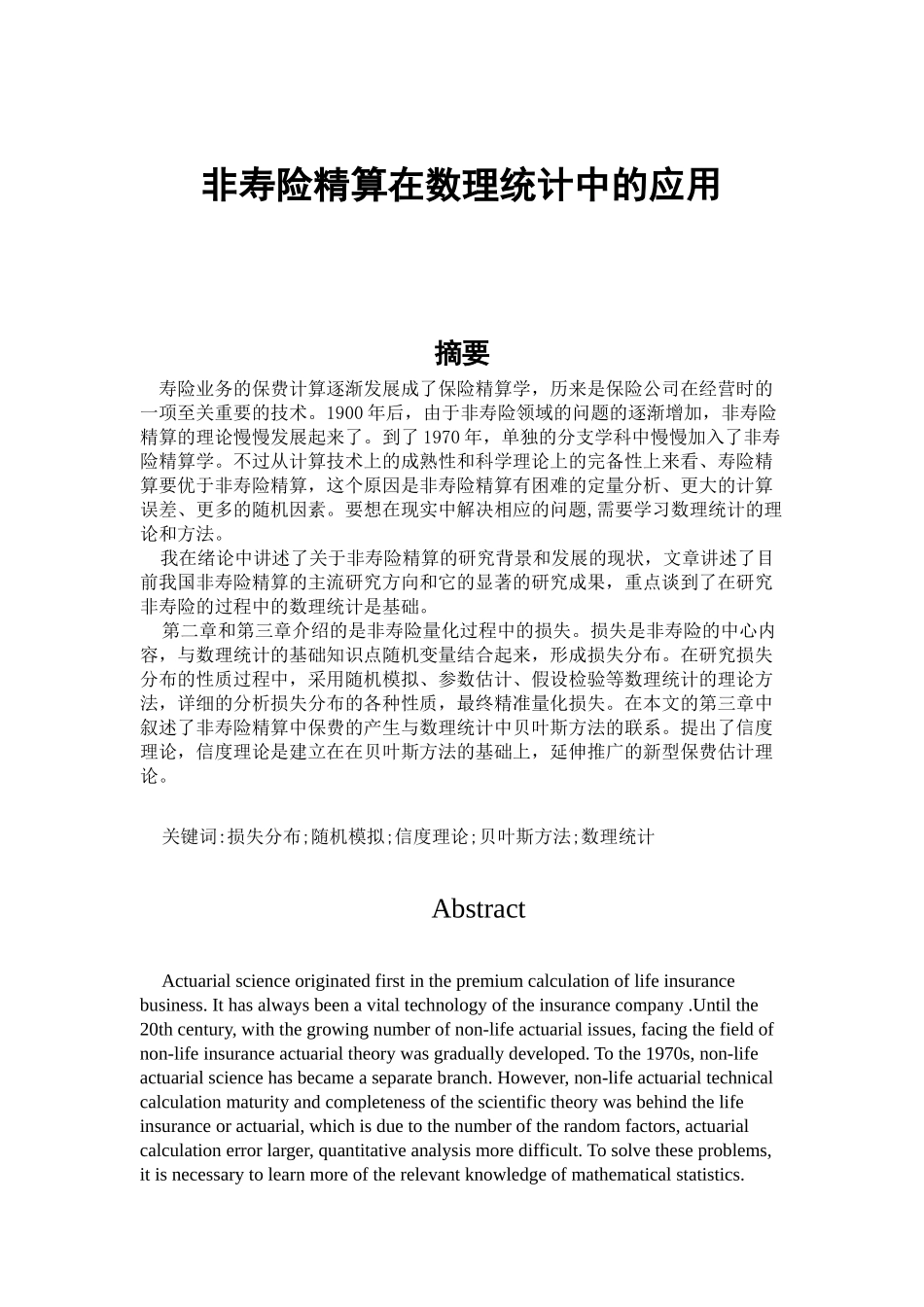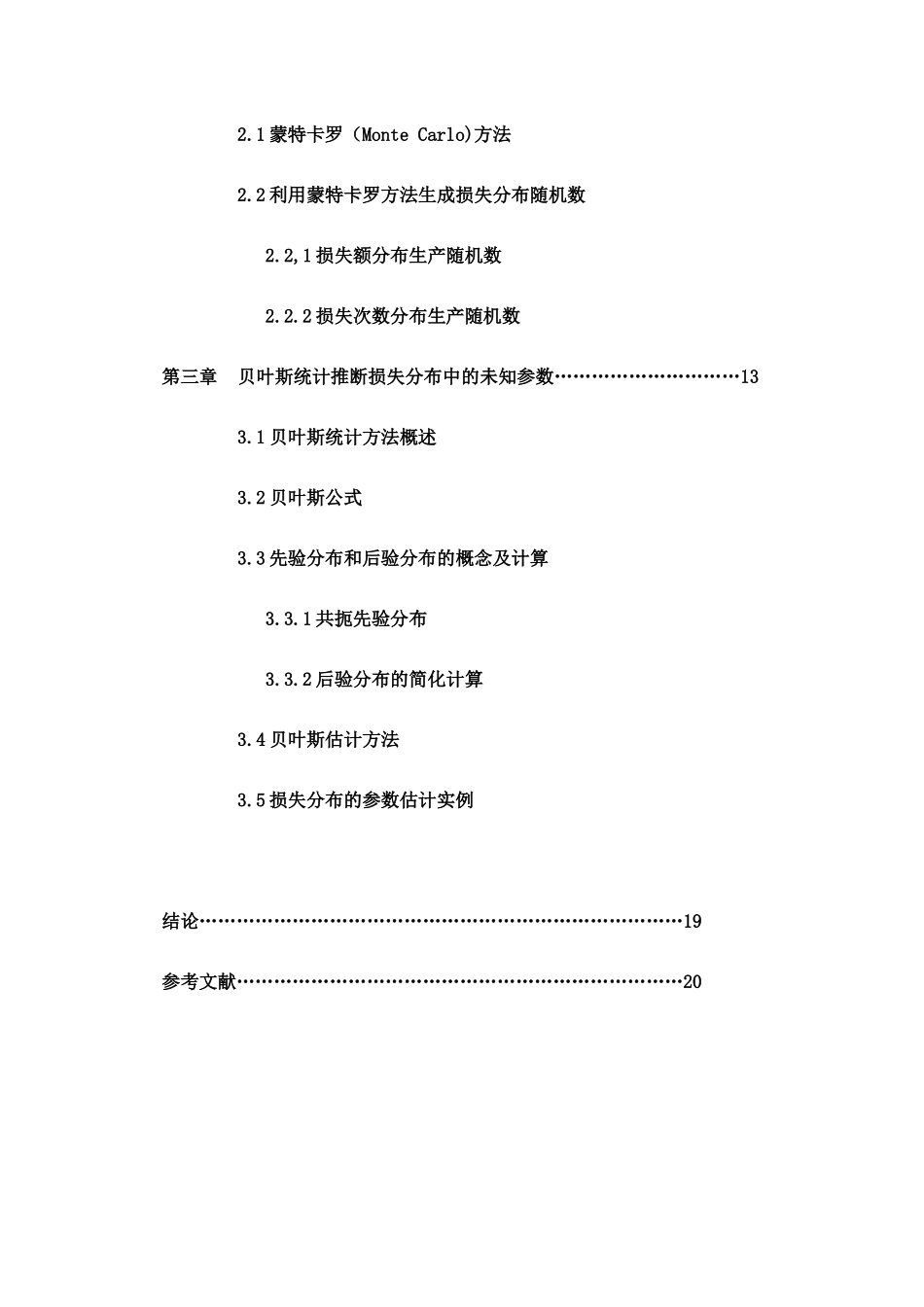非寿险精算在数理统计中的应用摘要 寿险业务的保费计算逐渐发展成了保险精算学,历来是保险公司在经营时的一项至关重要的技术。1900 年后,由于非寿险领域的问题的逐渐增加,非寿险精算的理论慢慢发展起来了。到了 1970 年,单独的分支学科中慢慢加入了非寿险精算学。不过从计算技术上的成熟性和科学理论上的完备性上来看、寿险精算要优于非寿险精算,这个原因是非寿险精算有困难的定量分析、更大的计算误差、更多的随机因素。要想在现实中解决相应的问题,需要学习数理统计的理论和方法。 我在绪论中讲述了关于非寿险精算的研究背景和发展的现状,文章讲述了目前我国非寿险精算的主流研究方向和它的显著的研究成果,重点谈到了在研究非寿险的过程中的数理统计是基础。第二章和第三章介绍的是非寿险量化过程中的损失。损失是非寿险的中心内容,与数理统计的基础知识点随机变量结合起来,形成损失分布。在研究损失分布的性质过程中,采用随机模拟、参数估计、假设检验等数理统计的理论方法,详细的分析损失分布的各种性质,最终精准量化损失。在本文的第三章中叙述了非寿险精算中保费的产生与数理统计中贝叶斯方法的联系。提出了信度理论,信度理论是建立在在贝叶斯方法的基础上,延伸推广的新型保费估计理论。关键词:损失分布;随机模拟;信度理论;贝叶斯方法;数理统计 AbstractActuarial science originated first in the premium calculation of life insurance business. It has always been a vital technology of the insurance company .Until the 20th century, with the growing number of non-life actuarial issues, facing the field of non-life insurance actuarial theory was gradually developed. To the 1970s, non-life actuarial science has became a separate branch. However, non-life actuarial technical calculation maturity and completeness of the scientific theory was behind the life insurance or actuarial, which is due to the number of the random factors, actuarial calculation error larger, quantitative analysis more difficult. To solve these problems, it is necessary to learn more of the relevant knowledge of mathematical statistics. Only flexible use of a...












